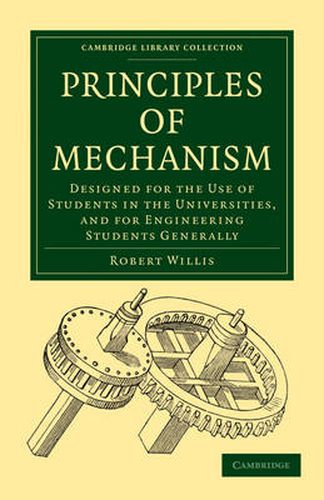Readings Newsletter
Become a Readings Member to make your shopping experience even easier.
Sign in or sign up for free!
You’re not far away from qualifying for FREE standard shipping within Australia
You’ve qualified for FREE standard shipping within Australia
The cart is loading…






Robert Willis (1800-1875) was a scientist, inventor and architectural historian of international repute. As Jacksonian Professor of Natural and Experimental Philosophy at Cambridge, he demonstrated specially made mechanical devices to huge audiences. First published in 1841, Principles of Mechanism provided the theory behind the demonstrations. He defined mechanism as the means by which any relations of motion could be realised. The book was extremely influential, with all books in English, French, and German on the subject for the next generation adopting Willis’ classification and nomenclature. He worked closely with William Whewell, whose Mechanics of Engineering was published in the same year. These two books established the science of mechanism, and provided study materials for the rapidly growing engineering profession. The work became a standard textbook for engineering and mathematics students, with a second edition issued in 1870.
$9.00 standard shipping within Australia
FREE standard shipping within Australia for orders over $100.00
Express & International shipping calculated at checkout
Robert Willis (1800-1875) was a scientist, inventor and architectural historian of international repute. As Jacksonian Professor of Natural and Experimental Philosophy at Cambridge, he demonstrated specially made mechanical devices to huge audiences. First published in 1841, Principles of Mechanism provided the theory behind the demonstrations. He defined mechanism as the means by which any relations of motion could be realised. The book was extremely influential, with all books in English, French, and German on the subject for the next generation adopting Willis’ classification and nomenclature. He worked closely with William Whewell, whose Mechanics of Engineering was published in the same year. These two books established the science of mechanism, and provided study materials for the rapidly growing engineering profession. The work became a standard textbook for engineering and mathematics students, with a second edition issued in 1870.